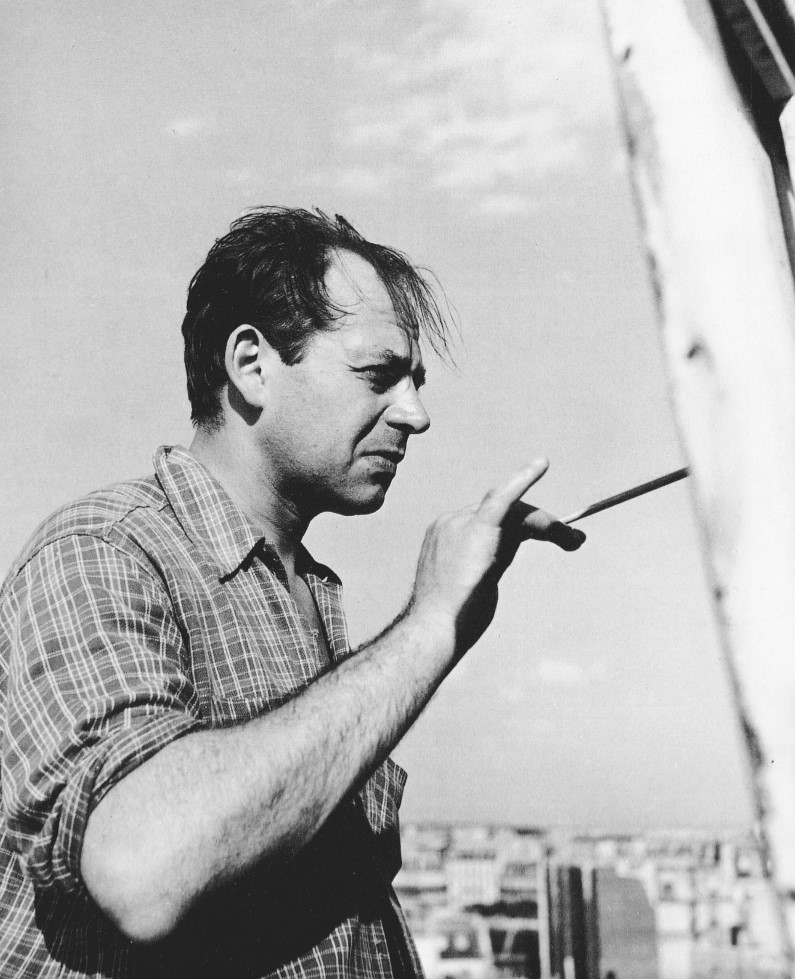Ernest BIRO
January 2, 2019Maurice BLOND
January 2, 2019Arbit BLATAS
KAUNAS (LITHUANIA) 1908 – NEW YORK 1999
Arbit Blatas’s parents were piano merchants and did not oppose their son’s artistic career. When he was young, he studied drawing in Pottava, at the palace of Lithuania’s governor, which was transformed into an educational center for children. In 1924, he left for Berlin and took drawing classes at the School of Fine Arts. He arrived in Paris in 1925. He settled in Montparnasse on rue de la Gaîté and met Sylvia Satenstein who he married in 1933. Following an exhibition at the Mouradian-Vallotton gallery in 1934, art dealer Pierre Matisse offered to exhibit his paintings in New York.
In 1935, thanks to Krémegne, the artist discovered Céret, Collioure, and Banyuls in the south of France. During World War II, Blatas emmigrated to the United States. He later acquired American nationality. After the war was over, Blatas lived both in Europe and in the United States. In 1967, the Musée de l’Orangerie followed André Malraux’s advice and purchased a bronze sculpture representing the painter Soutine (currently in a garden in the 14th arrondissement). Blatas remarried with the opera singer and stage director Regina Resnik. Between 1975 and 1984, he designed opera sets and costumes.
In 1990, the artist donated forty-one portraits of School of Paris artists to the Musée des Années Trente in Boulogne- Billancourt, which are kept in a room dedicated to him. Active until the very last day, Blatas was an eternal polyglot traveler (he spoke Russian, Polish, French, English, Italian, German, Yiddish, and Hebrew). In spring 1998, he wished to return to his hometown of Kaunas, on the occasion of the great retrospective dedicated to him. Arbit Blatas died on April 27, 1999 at his home in Manhattan.
Stories of Jewish Artists of the School of Paris 1905-1939
FRENCH-ENGLISH
Capitale des arts, le Paris des années 1905-1939 attire les artistes du monde entier. De cette période de foisonnement, un terme est resté, celui d'Ecole de Paris, qui recouvre une grande diversité d'expression artistique. Dans ce brassage dont Montparnasse est le creuset, un groupe se distingue : celui des artistes juifs venus de Russie, de Pologne et d'Europe centrale. Si leurs styles sont variés, un destin commun les rassemble : ils fuient l'antisémitisme de leur pays d'origine. Certains ont connu la célébrité dès les années 1920, tels Soutine, Lipchitz ou Chagall. D'autres n'ont pas eu le temps ou la chance d'y accéder. Près de la moitié a péri dans les camps de concentration nazis.
From 1905 to 1939, Paris attracted artists from all over the globe as the capital of the art world. This period of artistic proliferation became known as the School of Paris, and includes a great diversity of artistic expression. Within the teeming art world centred on Montparnasse, one group set itself apart: Jewish artists from Russia, Poland, and Central Europe. Although their styles were diverse, they shared the common fate of fleeing anti-Semitic persecutions in their home countries. Some became famous in the 1920s, such as Soutine, Lipchitz, and Chagall, while others did not have the time or the luck to gain renown. Nearly half of these artists died in Nazi concentration camps.





